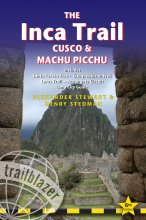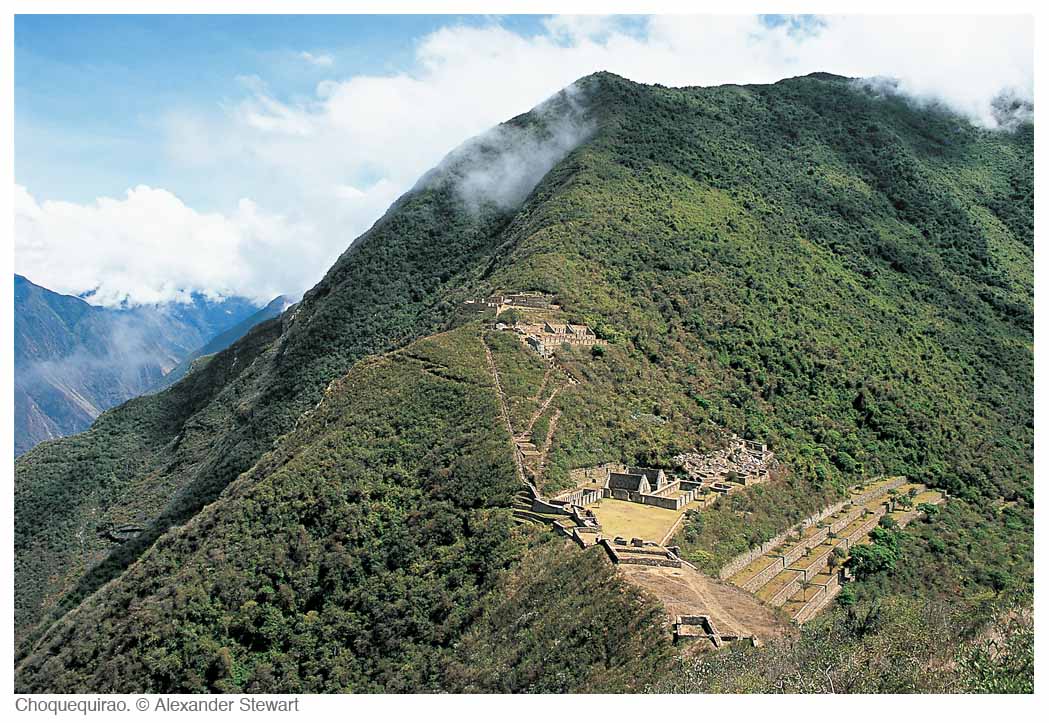'These human-scale books, written and published by people who genuinely know and love their subject, are perfect for travel's post-pandemic recovery.'
— The Guardian, March 2021

The Inca Trail, Cusco & Machu Picchu
Excerpt:
Introduction
Contents | Introduction | With a tour group or on your own? | Route options | Sample route guide | Food & drink
Introduction
The mystery of the deep valleys which lie in the quadrant north to north-east of Mount Salcantay have long demanded attention. Separated from Ollantaytambo and Amaybamba by the Grand Canyon of the Urubamba, protected from Cuzco by the gigantic barrier of Salcantay, isolated from Vitcos by deep valleys and inhospitable, high windswept bleak regions called punas, they seem to have been unknown to the Spanish Conquerors and unsuspected by the historians… it appears to have been a terra incognita.
Hiram Bingham, Lost City of the Incas
In July 1911 the American explorer Hiram Bingham stumbled across the Inca ruins at Machu Picchu, the archetypal Lost City. The discovery was the realization of many people’s dreams and it has since proved to be the inspiration for innumerable adventure tales; none of the world’s other great ruins can compare with Machu Picchu’s location on a knife-like ridge, amid thick forest, high above a tumultuous river and frequently cloaked in swirling cloud, with the horn of Huayna Picchu punching through the mist and snow-capped mountains glittering on the horizon.

Bingham was directed to the region and along with his Peruvian guides explored the hillside reputed to conceal the ruins. All at once they ‘were confronted with an unexpected sight, a great flight of beautifully constructed stone-faced terraces, perhaps a hundred of them, each hundreds of feet long and ten feet high’. Pushing on, ‘without any warning’, Bingham happened upon a cave carved into a stunningly sculpted structure whose ‘flowing lines… symmetrical arrangement of ashlars, and gradual gradation of the courses combined to produce a wonderful effect… It seemed like an unbelievable dream. Dimly, I began to realize that this wall and its adjoining semicircular Temple over the cave were as fine as the finest stonework in the world. It fairly took my breath away…’ Prior to the revelation of Machu Picchu, Bingham had explored and uncovered the ruins at Choquequirao. He was also responsible for discovering two other Inca sites of great importance, Vitcos and Vilcabamba. Countless other expeditions have subsequently explored the region and numerous discoveries have been made, though none as significant as those unearthed by Bingham. In addition to this, a network of Inca roads crisscrossing the mountains and landscapes have been found; these led to the creation of trekking routes for modern-day pilgrims and adventurers to follow. The Inca Trail is just one such route, which penetrates the forest and crosses high passes to reach its goal, the ruins at Machu Picchu. Heavily promoted and justifiably popular, the celebrated trek is almost a victim of its own success.
In the wake of stringent regulations imposed to preserve the route, alternative options to reach Machu Picchu have been established and treks to the other Inca sites have developed as genuine alternatives to the crowded classic trek: the Santa Teresa route avoids many of the regulations associated with the Inca Trail but still gets you to Machu Picchu following a superb trek through varied landscapes.
The Choquequirao trek takes you to these remote ruins perched above the Apurímac valley in a location arguably even more dramatic than that of the better-known site at Machu Picchu.
The Vilcabamba trek explores puna, pampa, pasture, cloud forest and rainforest to lead you to Espíritu Pampa, the last refuge of the Incas, the untroubled, unrestored ruins of which are largely still camouflaged and concealed by the forest. However, check the security situation before making plans to trek in the Vilcabamba area (see p32).
Epic trails joining the various sites, linking the Vilcabamba and Choquequirao routes to the Santa Teresa route, have also been uncovered and now offer the ultimate trekking experience for those with a passion for wilderness and a fascination with the world of the Incas.
Cusco, the Inca capital and a contemporary world-class city, wears its celebrity lightly and remains true to its past. The Incas built temples, palaces, aqueducts and roads worthy of an empire that stretched from Colombia to Chile. The Spanish conquistadors under Pizarro then used the precisely cut stones as the foundations for their opulent churches and monasteries. It’s a fascinating place to visit with well-designed museums to fire the imagination, including the new Casa de Concha that houses the artefacts taken from Machu Picchu by Bingham and recently returned from Yale University.
Despite the pressures of mass tourism and the popularity of the better-known sites, it is still possible to explore the Cusco region free from crowds. Just take up the challenge and follow in the footsteps of the pioneers.
Latest tweets